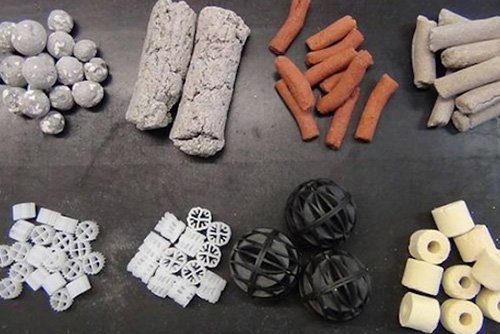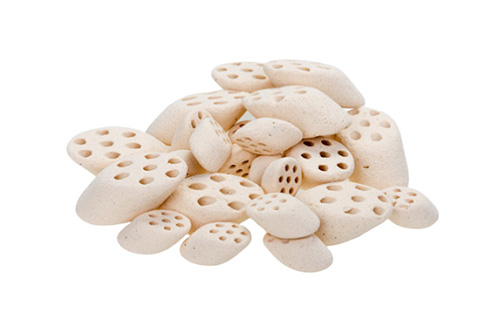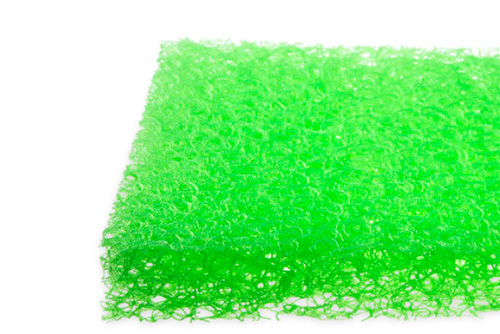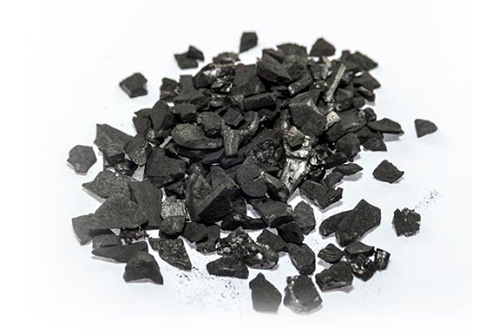Setting up an aquarium filter could be a bit tricky at first, but if you are someone who is a fish hobbyist then learning the basics of installing an aquarium is the primary step that you need to take. Even if you are new to this, this blog will surely help you with everything in detail.
We have tried to provide all the major chunks of information regarding the types of aquarium filter media, aquarium filter setup, followed by a step-by-step guide on how to install an aquarium right from the scratch. We believe that by the end of this article you will be confident enough to set up your aquarium successfully.
Types of Aquarium Filter Media

An essential component of any aquarium setup is aquarium filter media. Although it may seem a little strange at first, fish also require filters, particularly when they are confined to an area that is different from their natural habitat.
A filter helps the water aerate so that fish can breathe properly, removes debris, and even keeps nitrogenous fish waste from building up to dangerous levels.
Below is a list of the primary uses and varieties of aquarium filters.
Physical or mechanical filtration is the one where the uneaten fish food particles, decaying plant material, or any floating foreign substance gets filtered through the means of a filter. Mechanical filters are used just to collect the waste and not to break them down. Hence, this type of filter needs to be cleaned regularly. Along with regular cleaning, a mechanical filter like a sponge needs to be changed from time to time to avoid the pollution of aquarium water.
For an aquarium, this is the most crucial type of filtration. Fishes produce waste that contains ammonia and nitrites. A rise in ammonia and nitrite levels can be toxic to fish and cause internal organ damage. In the long run, fish can die.
Therefore, biological filters are employed to regulate the water’s ammonia and nitrite concentrations. Nitrifying bacteria found in the bio filter system change ammonia and nitrites into nitrates, which aquatic plants can use. In addition, nitrates are also less harmful to the fish.
Fish in aquariums with limited water will eventually perish due to toxic levels of ammonia and nitrites if biofiltration is not used.
This kind of filtration is required to remove any chemicals that could be harmful to the fish in the aquarium. The primary application for filters like activated carbon is chemical filtration. The activated carbon absorbs any dissolved chemicals, such as fish medications, and restores the water’s purity and health.
In order to allow the water to absorb things like dissolved proteins, chlorine, chloramine, etc., it is run through a chemical filter. Chemical compounds accumulate inside chemical filters, necessitating routine cleaning. A chemical filter needs to be changed frequently because once it becomes saturated with chemicals, the chemicals may leak back out of it.
In order to prevent the chemical filter from absorbing medication and making it less effective, it is recommended to remove it before adding any medication to the aquarium.
After the types and purposes of aquarium filter media have been clarified, let’s take a look at some of the filter media that aqua hobbyists use to accomplish aquarium filtration.
We’ve covered a few of the aquarium filter media below.

Aquarium biological filtration primarily uses ceramic filter media. These aid in the entire biofiltration process by giving the beneficial bacteria a place to grow and proliferate rather than actually filtering the water.
It is usually utilized in external filters where it serves as the primary location for bacterial colonization, which aids in the conversion of ammonia and nitrites into nitrates. The ring structure gives the bacteria a large surface area on which to grow and permits water to flow through it with ease.
Furthermore, these ceramic rings are reasonably priced and don’t need to be maintained frequently. The requirement for replacement every six to eight months is an additional benefit of utilizing them in the aquarium.

These are ideal for mechanical filtration because they are good at gathering debris and floating tiny particles. Since they gather solid particles, they must be replaced regularly because the debris usually clogs the foam and, once saturated, can begin to release the debris, negating the entire purpose of filtering.
A bio foam filter, however, works differently. It is used for mechanical filtration as well as biofiltration. At first, it works as a mechanical filter collecting debris. After the advantageous bacteria have established themselves on its surface, it functions as an aquarium biofilter. Because they offer two functions at once and are more affordable than filter pads, they are thought to be superior.
Any kind of aquarium can use a sponge filter, and they continue to function even when there are power outages. In addition, these can be easily cleaned, repaired, and replaced. They work great as pre-filters.

Activated carbon is a form of chemical filtration for aquariums. It helps in absorbing the dissolved substances with ease. In aquariums, activated carbon is mostly utilized following chemical processing. Keeping the bad odor out of the water helps to maintain the health and happiness of your fish. It also needs to be regularly replaced.
Because purigen can be recharged and used again, it is thought to be a superior substitute for activated carbon. This also makes it cost-efficient. Another alternative, coconut carbon is also very popular amongst hobbyists. It is a sustainable type of activated carbon that is used in freshwater and marine aquariums for water filtration. Finally, in order to guarantee the effectiveness of the filters, maintenance and routine cleaning are required. For this, filter brushes are generally used. These vary in size and shape based on the function they must fulfill. Furthermore, the most effective way to remove algae, parasites, and other bacteria is with a UV sterilizer machine. They enhance the aquarium’s water quality and are safe for fish.
3. Add the Substrate
Choose the substrate according to your choice except for some species that require specific substrates too. Wash the substrate in cold water before putting it in the tank. If there are gravels and other ornaments, rinse them well with cold water to make sure they are free of paints and dust.
Avoid using soap or chemical preps to clean the ornaments and gravel. After washing, place a layer of substrate on top, and then carefully place the gravels on top of that. Place them carefully so as not to strike the fragile tank bottom.
5. Install the Filter and Other Equipment
The filter needs to be installed now. It can be an internal filter or an external one. As each filter comes with a separate handbook and has a different installation process, set the filter in accordance with the manufacturer’s instructions. Every filter needs to be cleaned occasionally, and filter brushes can help with that.
Generally, internal filters are easy to set up. They mount to the tank’s rear wall, and the wire needs to be connected to a power source. External filters are installed below the tank, in a stand. For easy and continuous water movement back and forth, an external tank’s inlet and outlet tubes should be straight.
Next, fill the tank with the water heater and install it as directed by the instructions; however, do not immediately turn it on. Now, install the thermometer. Don’t forget to attach the thermometer to one end of the tank and the water heater to the other. This will ensure that the water is heated overall. Prior to turning on the heater, wait at least 20 minutes so that the internal thermometer has time to acclimate to the tank’s water temperature. This will avoid overheating.
Install all the other equipment like air stone, light, etc. at this time only.
FAQ
How do you start a fish tank filter?
Why is my fish tank filter not turning on?
How do I know if my fish tank filter is working?